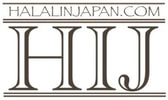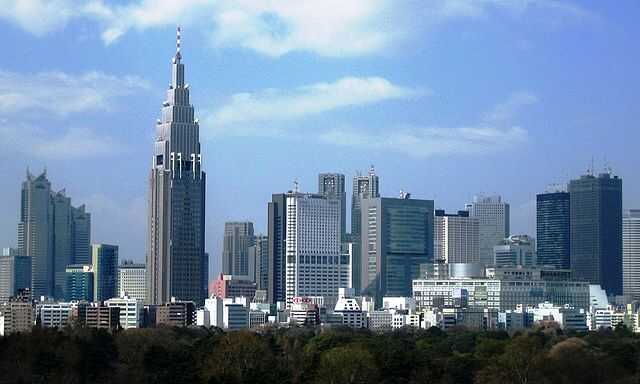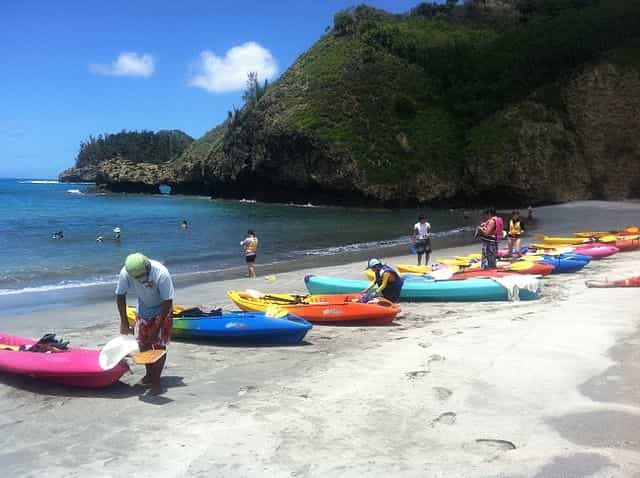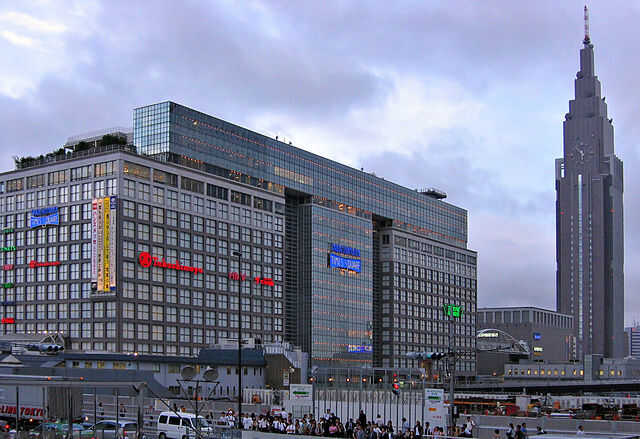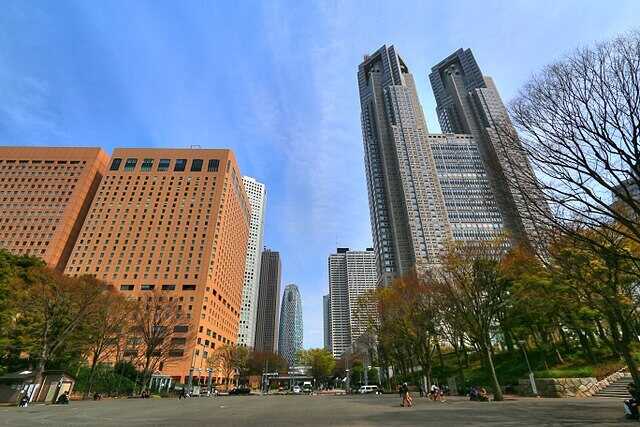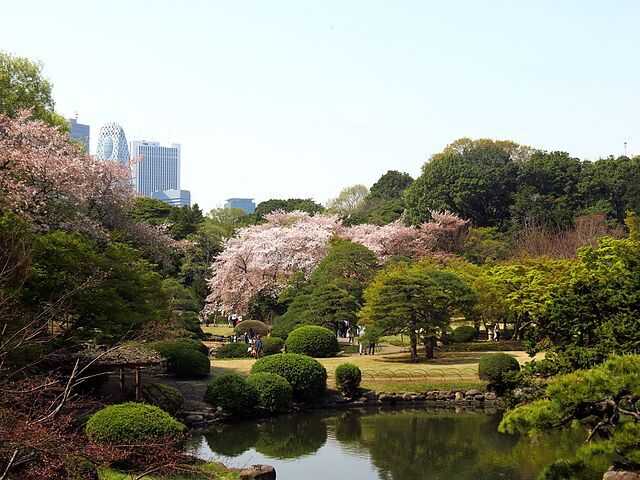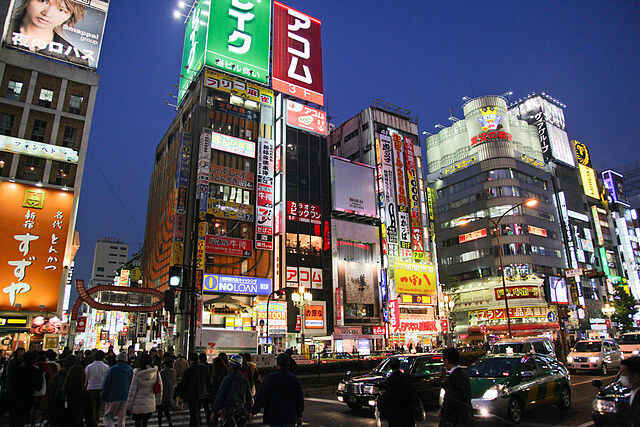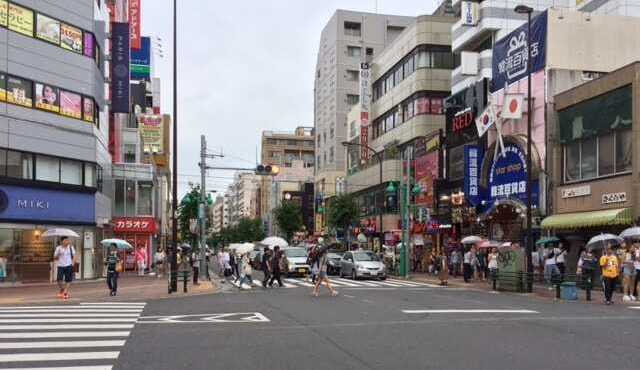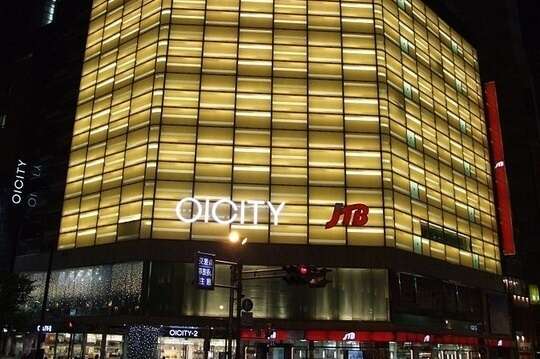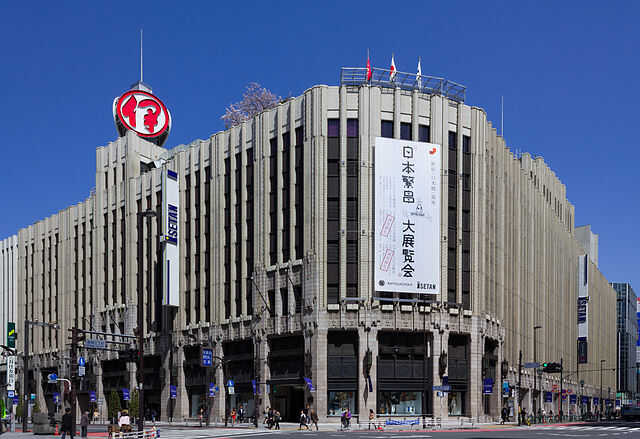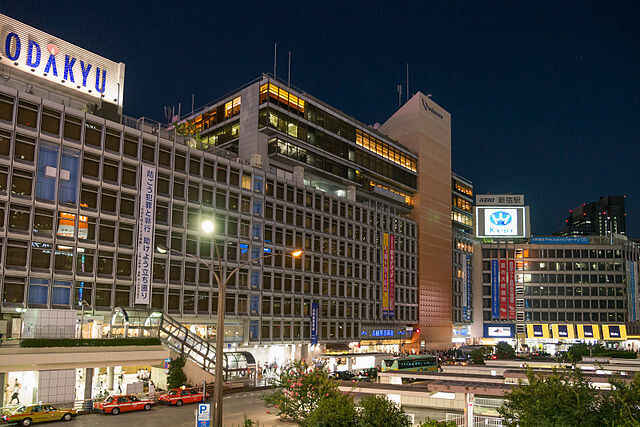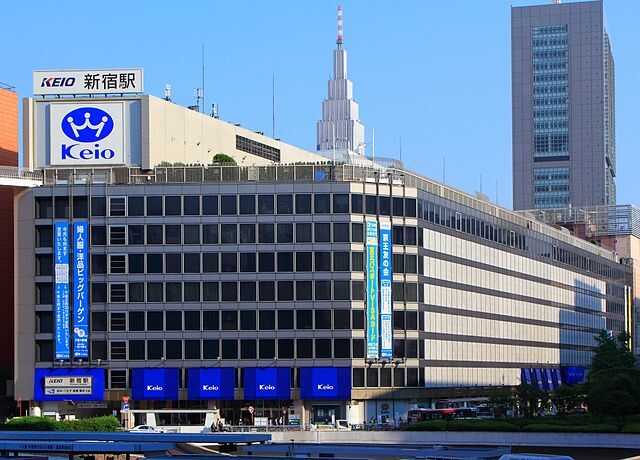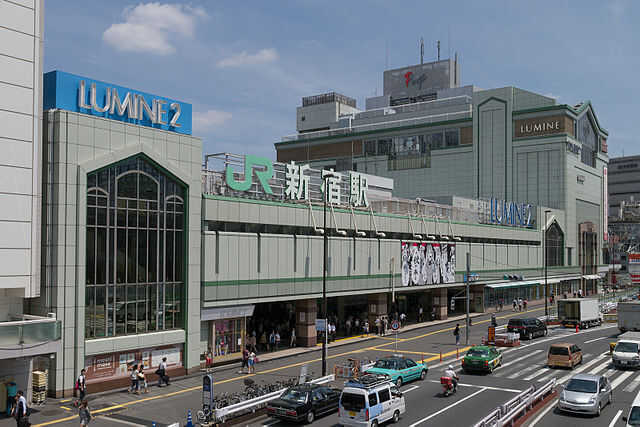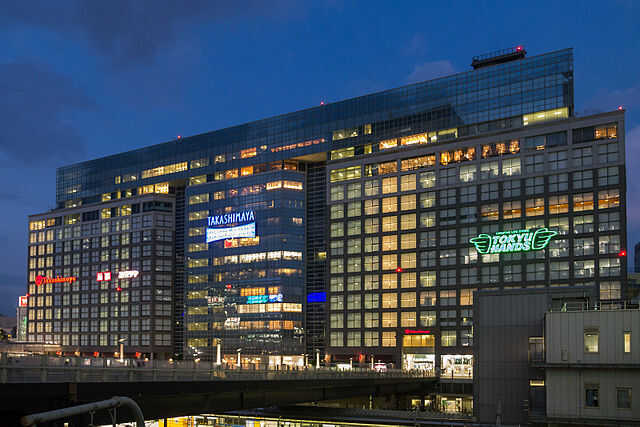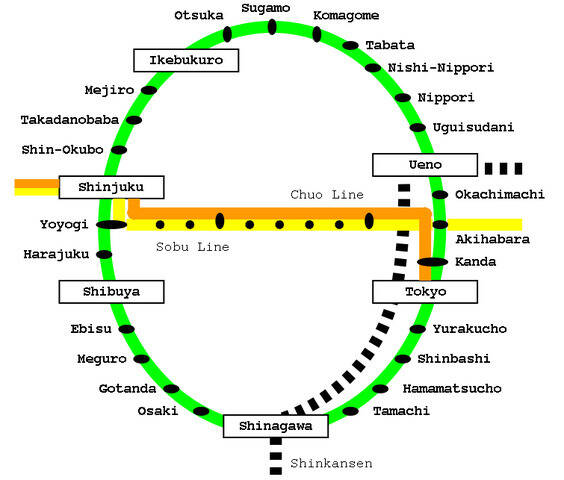|
The area surrounding Shinjuku Station is a huge business, commercial, and entertainment center. To the North lies Takadanobaba, where students from nearby Waseda University cross paths.
The West side of Shinjuku, a seismically stable area that escaped the 2011 earthquake with barely a scratch, is Tokyo's skyscraper district featuring Tokyo Metropolitan Government Offices and the curved form and webbed facade of the Mode Gakuen Cocoon Tower. |
|
Mode Gakuen Cocoon Tower is a 204-meter, 50-story educational facility located in the Nishi-Shinjuku district.
The building can accommodate 10,000 students and is home to three educational institutions: Tokyo Mode Gakuen "Fashion Vocational School", HAL Tokyo "Special Technology and Design College", and Shuto Iko "Medical College". According to the designer, the building's cocoon shape symbolizes a building that nurtures the students inside. |
|
Shinjuku Station is serving as the main connecting hub for rail traffic between Tokyo's special wards and Western Tokyo on inter-city rail, commuter rail, and metro lines.
With 3.8 million people using the station each day, it has become one of the busiest railway stations in the world. The entire above and underground complex has well over 200 exits. The station is a sight in itself, effectively forming a giant multi-level warren of department stores, restaurants, railway facilities and underground shopping malls which radiate out for kilometers under the surrounding area. |
|
If you're looking for a viewing platform, one of the highest spot in central Tokyo is the Tokyo Metropolitan Government Building "Tokyo's City Hall"; a tower 48 stories tall that splits into two sections at the 33rd floor.
Its twin towers, at a height of 202 meters on the 45th floor, have viewing platforms that are absolutely free, and offer a great view over Tokyo and beyond. The observation decks have gift shops and cafes. The Central Park is directly behind Tokyo's City Hall. |
|
Shinjuku Gyoen National Garden is a large public park garden, and one of the most popular places for viewing cherry blossoms in the spring.
The garden blends three distinct styles: a French Formal and English Landscape in the north and to the south, a Japanese traditional. A botanical conservatory and a traditional Japanese tea house can be found within the gardens. The entrance fee often makes the park surprisingly uncrowded and peaceful. The Garden is ten minutes walk east from JR Shinjuku Station. |
|
The East side of Shinjuku is devoted to shopping and nightlife, including Tokyo's largest Red-Light district Kabukicho, with its many small restaurants, nightclubs and drinking establishments.
It is perfectly harmless to walk around during the day and marvel at the photo billboards of various male and female escorts on offer as well as the live gangster-types acting shady. While walking around this area should probably not be done with children, for adults the result is far more "cultural interest" than sleaze. Kabukicho district is approximately 5 minutes walk from Shin-Okubo Station. |
|
Shin-Okubo Korean Town, one stop from Shinjuku Station on the Yamanote Line, is home to dozens of Korean-style restaurants and retail shops.
Many of the shops and restaurants in the area are operated by Korean immigrants. They offer a variety of Korean goods including groceries. It's a good place to experience authentic Korean food and culture. While the food around this area can be pricier than other places in Tokyo, the quality and the number of options are incomparable. |
|
For shopping or window shopping you will find some of the famous department stores in Shinjuku area including:
Marui is well known department store known for focusing on the 16-32 year age group. Spread out around Shinjuku Sanchome, the main building is located next to Shinjuku Gyoen National Garden. The men's building is located North of the main building and Marui Young is located West of Isetan. The branches are located near Shinjuku Sanchome Station. |
|
Isetan is one of the most popular department stores in Shinjuku. It caters to a broad 20+ age group.
The store is often first with showcasing new trends and new products. In particular, the fashion and food floors are thought to be very trend-setting. It has a Depachika "beautiful basement floor selling food and gifts" that is a little more expensive than other department stores in Shinjuku. Head out Exit B3, B4 or B5 from Shinjuku Sanchome Station. |
|
Odakyu is the largest department store on the West side of Shinjuku Station. It caters to the 30+ age group and has various buildings.
HALC, an annex of the Odakyu Department Store is located South of the West Bus Loop and focuses on sports clothing and electronics. The Bic Camera's largest Shinjuku location is within HALC. Shinjuku Mylord, a nine floor department Store is located behind the Keio Department Store and caters to a younger age group. |
|
Keio is similar to the Odakyu department store in terms of goods and services.
The Depachika "basement floor selling food and gifts" is smaller and more cramped than Odakyu. The department store belongs to the Keio Group, which also operates a suburban railway line from Shinjuku to western Tokyo. "West Exit and Central West Exit from the JR Shinjuku Station". |
|
Lumine has 3 buildings around the JR Shinjuku Station. Lumine 1 and 2 cater to all ages with average priced goods. Both buildings are located at the South Exit.
Lumine EST is located at the East Exit and Central East Exit. Lumine EST focuses more on haute fashion for younger women and famous restaurants. |
|
Takashimaya is the Southernmost department store in Shinjuku located between the JR Shinjuku and JR Yoyogi Stations.
This department store caters towards the mid-20s and up, along with families. Takashimaya’s depachika is comparable to Isetan, but not as famous. Look for Tokyu Hands and Books Kinokuniya at the Southern end of the department store. Head to New South Exit and the Southern Terrace Exit from the JR Shinjuku Station. |
Shinjuku Station AccessNarita Express Trains travel between Narita Airport and Shinjuku Station. Train is the obvious option for arrival, as Shinjuku Station is on the JR Yamanote, Chuo, Sobu, Saikyo, and Shonan-Shinjuku Lines.
Subway service is provided by the Tokyo Metro Marunouchi and Fukutoshin Lines and the Toei Shinjuku and Oedo Lines. There are also terminal stations for the Keio, Odakyu and Seibu Shinjuku private railway lines. Main stations in different wards of Tokyo including Shinjuku Station can easily be accessed by JR Yamanote Line. |
Shinjuku Muslim Friendly AccommodationHere as you see, there are few Muslim friendly hotels in Shinjuku and in the neighborhood. Once you click on any of the hotels, you will be redirected to an online booking website where you can make your reservation.
There are more Muslim friendly hotels in Tokyo listed on our website. For booking random hotels you can search with Hotels.com, or the Hotel Map below which shows hotel prices and location on the map. There are Vacation Rentals in Shinjuku which suit travelers who prefer to rent a living space, especially for larger groups, families or those who seek a more local, everyday life experience. If you are traveling light and looking for a more economical place to stay Hostels are a good option. For booking a rental car use the search engine below. Fill out the details; pickup and drop-off places, date and time, and press search. You will be redirected to Rental Cars website where a list of available cars will be shown to you to choose from. |
|
|
|
Shinjuku - Shinjuku-ku, Tokyo
Sources
- Skyscrapers of Shinjuku - Top
- Shinjuku Skyscrapers
- Mode Gakuen
- Shinjuku Station - South Exit
- Tokyo Metropolitan Government Bldg. & Central Park
- Shinjuku Gyoen National Garden
- Kabukicho
- Shin-Okubo Korean Town
- MARUI City Shinjuku
- Isetan Shinjuku
- Odakyu
- Keio
- Lumine 2 - Shinjuku Station South Exit
- Takashimaya
- JR Yamanote Line
